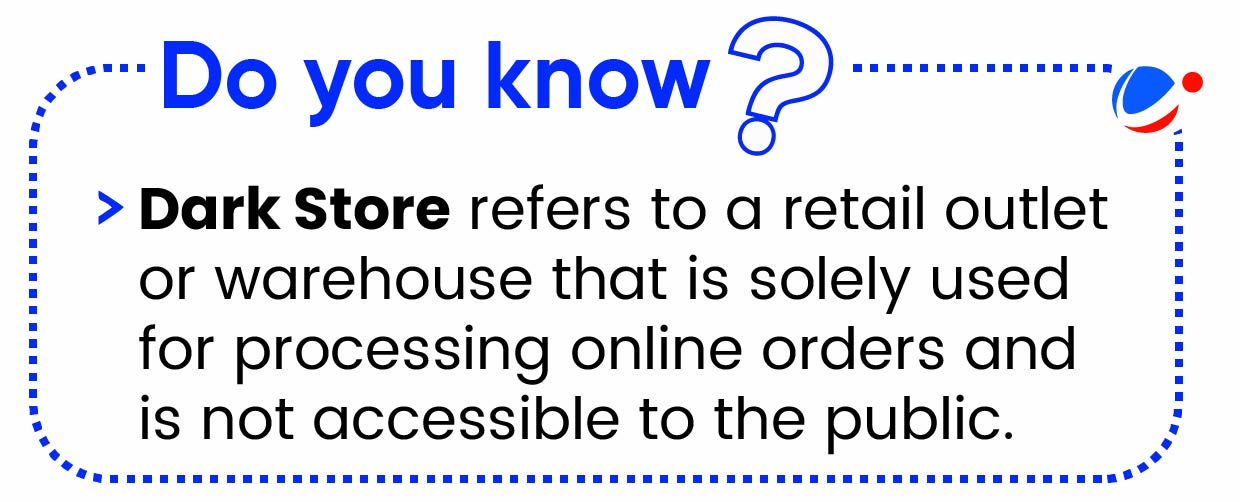Why in the news?
According to a report by consulting firm Kearney, while India's quick commerce sector is expected to witness significant growth, however it is bringing changes in consumer behaviour.
What is Quick Commerce?
Status of Quick Commerce
|
- It refers to the instantaneous or rapid delivery of goods and services, preferably within an hour or less.
- E-commerce generally takes 3-4 days for the delivery of goods and services.
- Benefits: 24*7 operation, reduces role of middlemen, improves marketing and supply chain management by hyper-local sourcing.
Growth Drivers of Quick Commerce
- Increased penetration of Internet and smartphones: It allows consumers to shop online from mobile applications anywhere, at any time.
- Moreover, the COVID-19 pandemic accelerated the adoption of quick commerce by boosting demand for contactless deliveries.
- Rise of social media: E.g. Brands now cater to large audiences through platforms such as Instagram, TikTok, YouTube and influencer marketing.
- Consumer Behaviour: E.g. Younger generations are more tech-savvy and prioritize online shopping due to its convenience, affordability and speed.
- Technological Advancements:
- Advanced Algorithms predicts consumer demands improving overall efficiency of supply chain.
- Automation and Robotics enhance the speed and accuracy of warehouse operation with use of real-time tracking and automated warehouses.
- Favourable Government Initiatives:
- Unified Payments Interface (UPI), Bharat Net and RuPay have made payments convenient and hassle-free.
- Open Network for Digital Commerce (ONDC) has increased the reach of India's quick commerce ecosystem.
Unintended Consequences of Quick Commerce

- Instant Gratification: Demographic preference for instant gratification has increased, leading to frequent and impulsive buying.
- Moreover, websites uses cookies to track purchasing behaviour and target customer to trigger their psychology to buy more and more.
- Social security concerns of gig workers: E.g. Instances such as 10-minute delivery promises raise ethical challenges related to the safety of delivery partners, impact on road safety, etc.
- Environmental Sustainability: E.g. increased congestion on roads due to the use of motorbikes may increase the carbon footprint by emission of greenhouse gases.
- Health Implications: Freshness of online grocery items remains a concern. E.g. Poor handling of dairy, eggs can pose serious health risks.
- Impact on Retail Businesses and Kirana Stores: It has reduced footfall in malls, supermarkets, and small stores.
- Retailers are facing challenges related to the shrinkage of sales and profit margin, especially in urban areas.
Striking the Right Balance
- Social Security Net: Rigid safety standards for delivery partners, including insurance for delivery partners, prompt medical assistance in case of accident, should be undertaken.
- Strengthen Hygiene Practices for Improved Health Outcomes: E.g. Recently, FSSAI directed e-commerce platforms to step up food safety protocols, warning of strict action for lapses.
- Collaboration and Integration with existing industries: E.g. Building partnerships with local and kirana stores can enhance inventory availability and also aid in distribution efficiency.
- Regulatory Intervention: As the market expands, government can intervene to encourage competition, discourage monopolistic behaviour, and safeguard consumer interests. E.g. data protection, labour rights for delivery personnel.
- Environmental Resilience: Focus should be on electrification of delivery vehicles, usage of drones for short-distance deliveries and optimization of deliveries by harmonizing addresses.
- Declogging the Urban Traffic: E.g. the use of mobile warehouses, collection points can help in vehicle load optimization on the urban roads.
Conclusion
While quick commerce has enhanced consumer convenience, it has simultaneously fuelled unsustainable consumerism and raised concerns regarding the social security of gig workers. Thus, it becomes necessary to implement measures so as to ensure the protection of gig workers and simultaneously promote awareness among consumers to curb impulsive and unsustainable spending habits.



